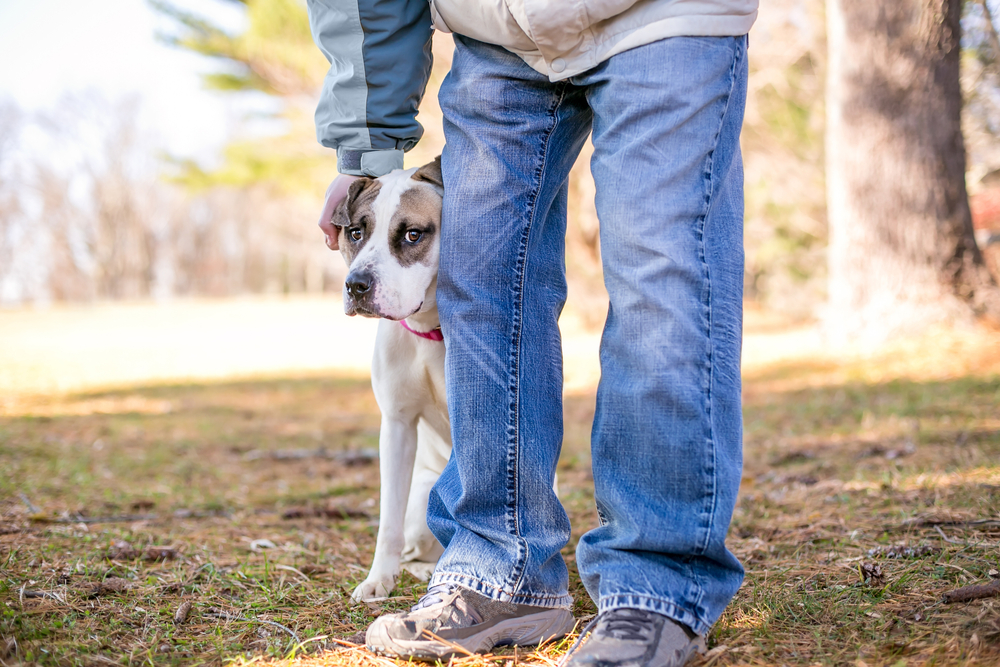Do you know the 4 main signs of anxiety in dogs? Although our animals cannot verbally tell us how they’re feeling, they can definitely express themselves. Learning how to interpret different behaviors and reactions can help you ensure that your pets are comfortable, safe, and content as often as possible.
Unfortunately, anxiety is a very common emotion that dogs experience. It can manifest in various ways, including some less-than-ideal behavior issues. Here are some of the biggest signs of anxiety in our canine companions:
Recognizing the 4 Signs of Anxiety in Dogs
Anxiety is a general term that is used to describe a wide range of behaviors. In dogs, certain symptoms can let you know that the animal is feeling scared, afraid, or uncomfortable in a situation. These typically include what we call fight, flight, freeze, or fidget responses, which present as:
- Fight: Dogs in fight mode will display certain forms of aggression, including barking, lunging, growling, and even snapping.
- Flight: If a dog is in flight mode, he will attempt to leave the situation. This might present as walking away or hiding to avoid the trigger.
- Freeze: On the other hand, dogs in freeze mode will get stiff and won’t move. This can be especially problematic when an owner tries to get the dog to move in a particular direction.
- Fidget: Dogs in fidget mode frequently jump, put items in their mouths, chase their tails, lick excessively, and sometimes even be overly friendly.
Some dogs will exhibit one of these modes frequently, while others might bounce between a few. If you notice any of the above regularly in your pet, you should talk to your veterinarian about anxiety.
Behavioral Side Effects of Anxiety in Dogs
Anxiety in dogs will often manifest as what humans see as behavioral issues. Some of the most common include:
Fear of Contact with Dogs and/or People
Fear of other dogs and people is one of the most common side effects of anxiety in dogs. When encountering people or other dogs, they react with fearfulness, barking, aggression, growling, or other signs of stress.
Separation Anxiety
Dogs with separation anxiety will have a strong reaction any time they are left alone. This includes barking, whining, howling, soiling, or even destroying items in the house. Being left alone causes them physical stress that does not disappear until their owner returns.
Resource Guarding
A resource-guarding dog will growl, snarl, or even attack a person or animal they feel is trying to take something that belongs to them. This can occur with food, toys, and even people.
Sound Sensitivity
While all dogs are susceptible to being surprised (and even scared) by an unexpected noise, dogs suffering from sound sensitivity can’t calm down after their initial reaction. They will continue to display signs of distress well after the sound is gone.
Treating Anxiety in Dogs
Your veterinarian will work closely with you to evaluate your dog based on the signs of dog anxiety. They will determine the type and severity of your dog’s anxiety to find the right treatment option. Sometimes behavior modification techniques such as socialization or desensitization can help. Other times medication will be needed if their anxiety is severe. It is important to be patient and loving with your dog to try to help overcome these emotions.
The team at Union Lake Veterinary Hospital knows how hard it can be to deal with a dog with anxiety. Our hospital uses positive reinforcement tactics and personalized treatment options to ensure every pet gets the best results. To learn more, please call (248) 363-1508.

